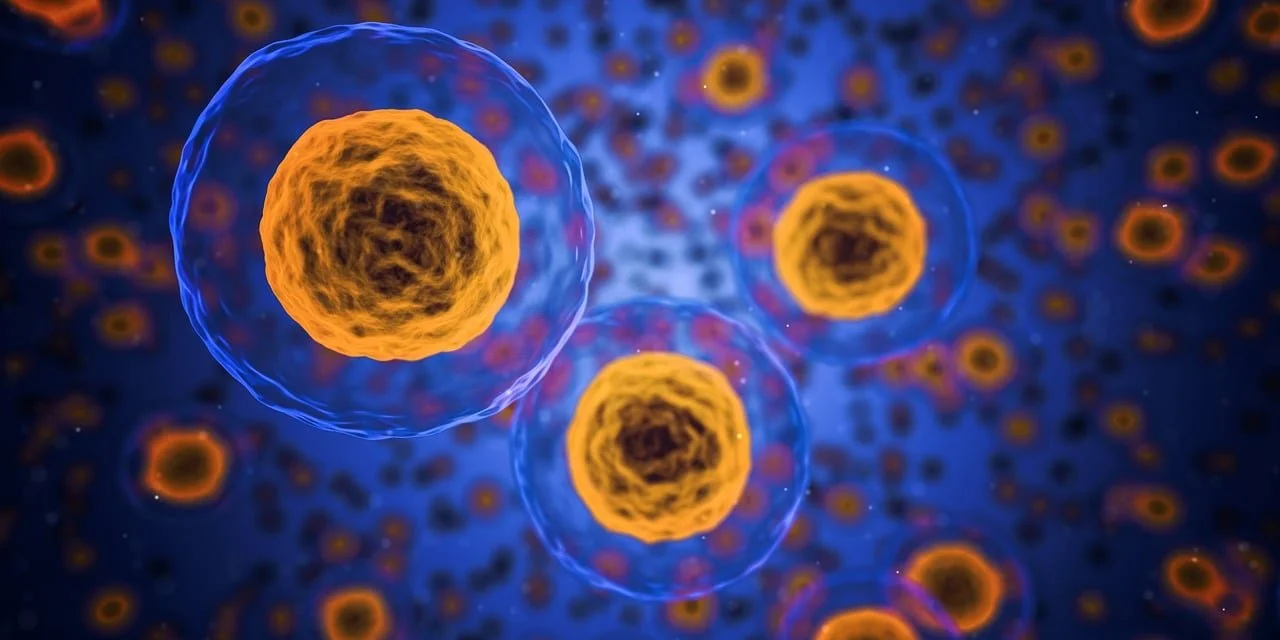The Sodium-Potassium Pump: A Vital Process in Every Human Cell
Hello, Friends.
In cellular biology, one of the most fundamental and life-sustaining processes is the operation of the sodium-potassium pump, also known as the sodium-potassium ATPase. Discovered in the 1950s by Danish scientist Jens Christian Skou, who later received a Nobel Prize for his work, this pump is crucial for maintaining the delicate balance of sodium and potassium ions across the cell membrane. It is a process that not only keeps our cells functioning optimally but also underscores the importance of nutrition in overall health.
Photo Credit: Pixabay
Understanding the Potassium-Sodium Pump
The sodium-potassium pump is a specialised protein embedded in the membrane of each cell. Its primary role is to maintain a specific concentration of sodium and potassium ions inside and outside the cell. This is achieved by actively transporting three sodium ions out of the cell and two potassium ions into the cell.
This pump's activity is vital for several reasons:
1. Maintaining Cellular Homeostasis: The pump helps regulate the cell's internal environment, ensuring that it remains stable despite changes in the external environment. This stability is crucial for various cellular processes, including nutrient uptake, waste removal, and cell volume regulation.
2. Generating Electrical Gradients: By maintaining a higher concentration of sodium ions outside the cell and potassium ions inside, the pump creates an electrical gradient. This gradient is essential for the transmission of nerve impulses, muscle contraction, and heart function.
3. Supporting Nutrient Absorption: The pump's activity facilitates the absorption of nutrients like glucose and amino acids into cells, which is vital for energy production and overall metabolism.
The Sodium-Potassium Pump and Reproductive Health
The sodium-potassium pump plays a vital role in maintaining the cellular environment necessary for proper reproductive function. If this pump is impaired, it can lead to various issues that affect fertility:
1. Hormonal Imbalances: The sodium-potassium pump is essential for the proper functioning of hormone-secreting cells, including those in the reproductive system. Dysfunction in the pump can disrupt the balance of reproductive hormones such as oestrogen, progesterone, and testosterone, leading to irregular menstrual cycles, ovulatory dysfunction, and reduced sperm quality.
2. Cellular Health: In both male and female reproductive organs, the health of cells depends on the sodium-potassium pump to maintain the proper ionic balance, regulate cell volume, and support the transport of nutrients and waste. Impairments in this pump can lead to cellular stress, affecting the health and function of ovarian follicles, sperm, and the uterine lining, all of which are critical for successful conception and implantation.
Photo Credit: Unsplash
The Healthy Ratio: Potassium to Sodium
For optimal health, maintaining the right balance between potassium and sodium in the body is crucial. The World Health Organization (WHO) recommends a potassium-to-sodium ratio of approximately 3:1. This means that for every milligram of sodium consumed, you should ideally consume three milligrams of potassium. This ratio supports cardiovascular health, helps regulate blood pressure, and promotes proper cell function.
Unfortunately, modern diets, particularly in the West, often skew heavily towards higher sodium intake with insufficient potassium. This imbalance leads to impaired cellular function. Therefore, focusing on a diet rich in potassium and low in sodium is essential for maintaining cellular and overall health.
Excess Sodium Intake and Health Implications
When sodium levels are excessively high, the sodium-potassium pump's ability to maintain the proper balance of these minerals across cell membranes is compromised. Even salts marketed as beneficial, such as Himalayan salt or sea salt, often contain high amounts of sodium, lacking the balanced mineral ratios naturally found in whole foods. It is important to focus on a diet that mirrors the more balanced mineral ratios present in nature to support optimal cellular health.
Comparing Potassium and Sodium Content in Vegetables and Fruits
Vegetables and fruits are excellent sources of potassium while being low in sodium, making them ideal for supporting the potassium-sodium pump's function. Below are some examples:
Photo Credit: Unsplash
Bananas: Often touted for their potassium content, a medium-sized banana contains about 422 mg of potassium and only 1 mg of sodium. This makes bananas an excellent choice for supporting the potassium-sodium pump.
Carrots: A versatile vegetable, one cup of cooked carrots offers around 390 mg of potassium and just 88 mg of sodium. Carrots are not only beneficial for supporting the sodium-potassium pump but also rich in beta-carotene, which is vital for immune health.
Apples: A refreshing fruit, one medium-sized apple provides approximately 195 mg of potassium and a negligible amount of sodium. Apples are not only supportive of the pump but also high in dietary fibre and antioxidants, promoting overall health and well-being.
Spinach: A powerhouse of nutrition, one cup of cooked spinach provides approximately 839 mg of potassium and just 126 mg of sodium. Spinach is not only great for the pump but also rich in other essential nutrients like iron and magnesium.
Sweet Potatoes: One medium sweet potato provides around 542 mg of potassium and 41 mg of sodium. In addition to being a great source of potassium, sweet potatoes are also high in fibre and vitamins.
Tomatoes: One cup of tomato contains about 427 mg of potassium and 9 mg of sodium. Tomatoes are versatile and can easily be incorporated into various dishes to boost your potassium intake.
The sodium-potassium pump is a fundamental process that keeps our cells and bodies functioning optimally. By understanding its role and the importance of maintaining a healthy potassium-to-sodium ratio, we can make informed dietary choices that support this vital cellular function. Including potassium-rich, low-sodium foods like bananas, spinach, sweet potatoes, and tomatoes in your diet is a simple yet effective way to promote cellular health and overall well-being. However, you must remember that each time you add sodium to your food, you skew the potassium-sodium ratios found naturally in these foods. Remember, every bite you take has the power to nourish your cells, support reproductive health, and keep your body's intricate systems running smoothly.
References:


